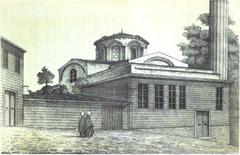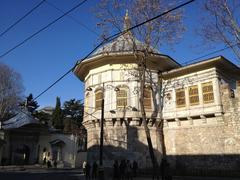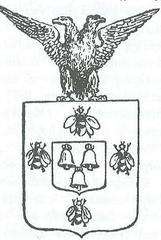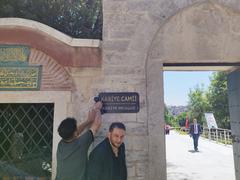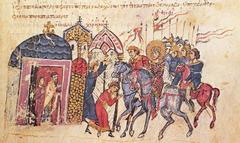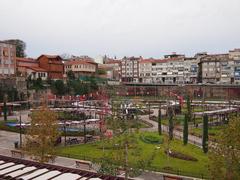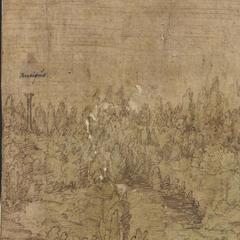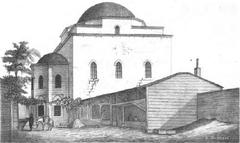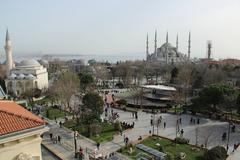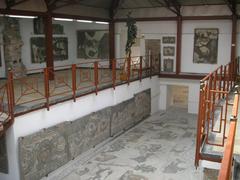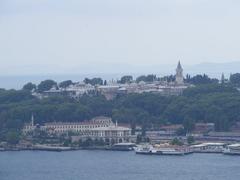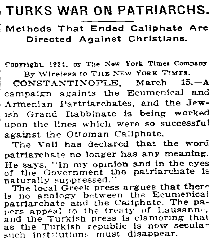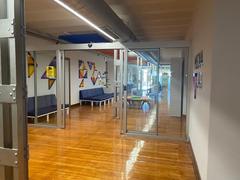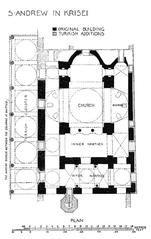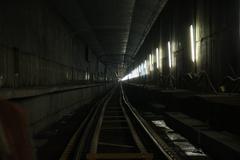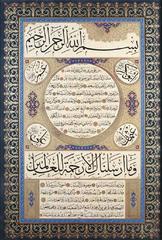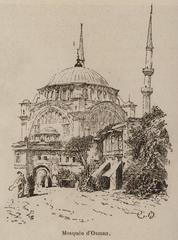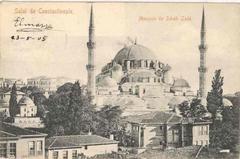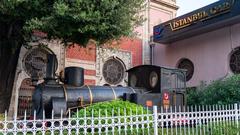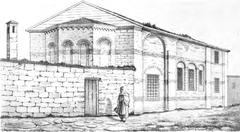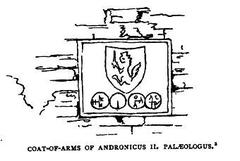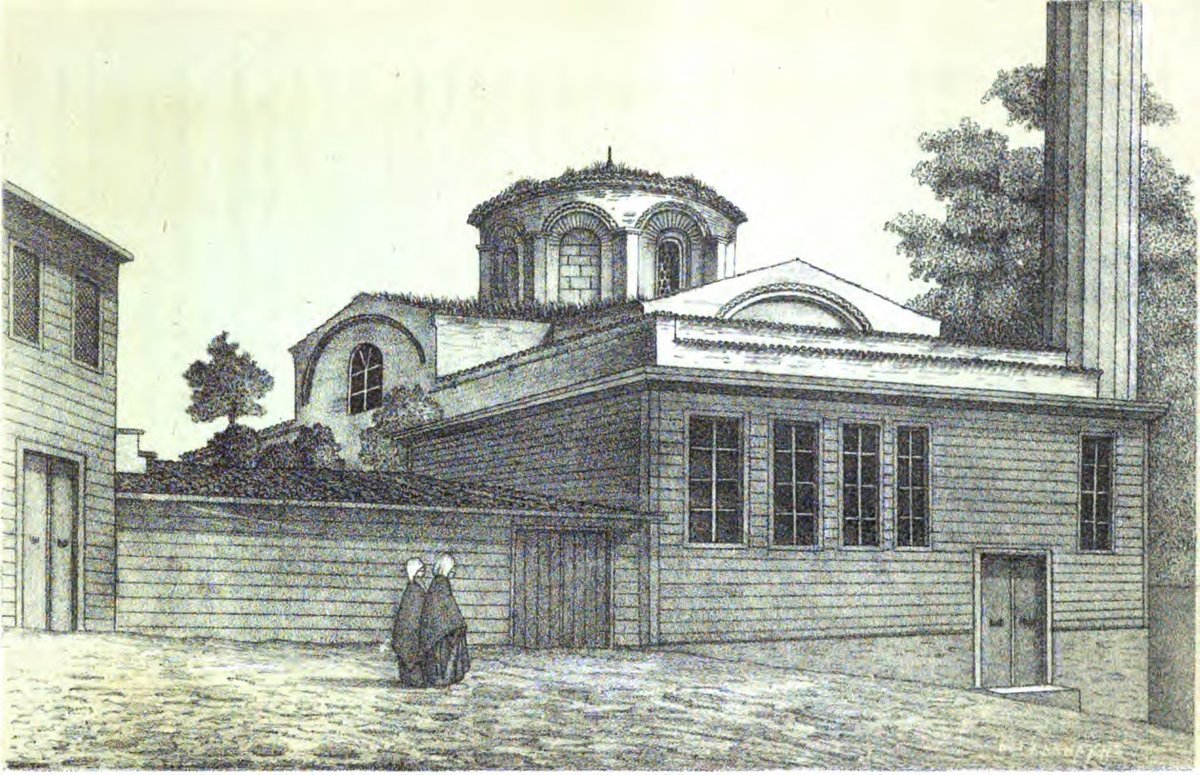
Bodrum Mosque: Visiting Hours, Tickets, and Historical Significance in Fatih, Istanbul
Date: 14/06/2025
Introduction
Set within Istanbul’s historic Fatih district, the Bodrum Mosque (Bodrum Camii), also known as Mesih Paşa Mosque, is a living testament to the city’s evolving religious and architectural legacy. Originally constructed in the 10th century as the Myrelaion Church by Byzantine Emperor Romanos I Lekapenos, this monument encapsulates the transition from Byzantine Christianity to Ottoman Islam. The name “Bodrum” (meaning “basement” in Turkish) refers to the vast underground cistern below the mosque, highlighting its layered history. For travelers and history enthusiasts, the Bodrum Mosque offers a unique journey through centuries of imperial ambition, religious devotion, and architectural ingenuity—making it a must-visit among Istanbul historical sites (Turkish Archaeological News; nomadicniko.com; Istanbul Tips).
Historical Background and Architectural Evolution
Byzantine Foundations: The Myrelaion Church
Commissioned by Emperor Romanos I Lekapenos (r. 920–944), the Myrelaion Church was constructed atop the remnants of an enormous rotunda-turned-cistern—second in size only to Rome’s Pantheon. Serving as an imperial chapel and mausoleum, the church was part of a private palace complex and was intended as a dynastic burial site. Romanos, his wife Theodora, and his son Christopher were all interred here, emphasizing the site’s status within the Byzantine imperial sphere (Turkish Archaeological News; The Byzantine Legacy; nomadicniko.com).
The original design featured a classic cross-in-square plan, with a prominent central dome supported by four columns. Underneath, the rotunda’s subterranean cistern—with its robust columns and vaulted ceilings—remains one of the most distinctive features of the site (archiqoo.com).
Transformation and Ottoman Conversion
The Myrelaion Church endured significant damage during the Fourth Crusade (1204) and periods of abandonment but was restored by the Palaiologos dynasty. After the Ottoman conquest of Constantinople in 1453, the building was converted into a mosque around 1500 by Mesih Pasha, a former Byzantine noble turned Ottoman Grand Vizier (Turkish Archaeological News). The mosque’s name, “Bodrum,” references the vast cistern below, which was later repurposed and, at times, used as a commercial space.
Ottoman modifications included the addition of Islamic elements such as the mihrab (prayer niche) and minbar (pulpit), as well as the construction of a slender limestone minaret. Despite these changes, much of the building’s Byzantine character remains visible (nomadicniko.com).
Restoration and Preservation
The mosque suffered fire damage in the late 18th and early 20th centuries. Significant restoration efforts, especially in the 1960s and 1980s, revived the structure for worship and public visits. Today, the mosque is an active religious center, with the cistern area serving as a prayer hall for women (arha318.wordpress.com).
Architectural and Artistic Highlights
Exterior and Structural Features
- Cross-in-Square Plan: The main hall exemplifies the Middle Byzantine architectural style, with a central dome supported by four piers.
- Cloisonné Masonry: The exterior displays alternating bands of brick and stone, a hallmark of Byzantine craftsmanship.
- Dome and Roof: The 17-meter-high dome, set on a drum with windows, infuses the interior with natural light.
- Minaret: Added during the Ottoman period, the mosque’s slender limestone minaret reflects Islamic architectural traditions (Turkey Things).
Interior Elements
- Nave and Dome: Remnants of Byzantine frescoes and geometric motifs can still be found under the dome.
- Mihrab and Minbar: Finely carved marble elements, added during the mosque’s conversion, are adorned with Islamic calligraphy and arabesque designs (Prayers Connect).
- Marble Columns: Reused columns with Corinthian and composite capitals support the prayer hall.
- Windows: Numerous arched windows provide a luminous atmosphere.
Courtyard and Cistern
- Courtyard: The mosque’s marble-paved courtyard features a colonnaded portico and a central ablution fountain.
- Cistern: The vast underground rotunda, originally a Byzantine imperial crypt, is now used for worship, particularly by women, and is accessible to visitors interested in the site’s unique engineering (Istanbul Clues).
Visitor Information
Visiting Hours and Admission
- Hours: Generally open daily from 9:00 AM to 6:00 PM, except during prayer times and religious holidays.
- Entry: Free of charge; donations are welcome but not required.
Dress Code and Etiquette
- Modest Attire: Men should wear long pants and avoid sleeveless shirts; women should cover their heads, arms, and legs. Shoes must be removed before entering.
- Behavior: Maintain silence, avoid visiting during prayers (especially Friday noon), and ask permission before taking photos inside.
Accessibility
- Entrances: The mosque is accessible by ramps at the main entrance.
- Cistern: Access to the cistern may be limited due to stairs and uneven surfaces.
Guided Tours
- Availability: Local tour operators and walking tours often include the Bodrum Mosque in Byzantine and Ottoman Istanbul itineraries. Inquire in advance for guided access to the cistern.
Getting There
- Public Transport: Take the T1 tram to Laleli-Üniversite station; the mosque is a short walk away.
- Taxi: Taxis are widely available, though traffic can be heavy.
- On Foot: Easily reachable from Sultanahmet or Beyazıt Square (Touristlink).
Religious and Cultural Significance
The Bodrum Mosque is a powerful symbol of Istanbul’s religious pluralism. Its history as both a Greek Orthodox church and an Ottoman mosque encapsulates the city’s transformation across empires. Today, it serves as a vibrant center of worship and community, particularly for local Muslims in the Fatih district (archiqoo.com; nomadicniko.com).
Nearby Attractions
- Laleli Mosque: Noted for its baroque Ottoman design.
- Beyazıt Square and Istanbul University: Historic sites with lively local character.
- Grand Bazaar: One of the world’s oldest covered markets.
- Süleymaniye Mosque: A masterpiece of Ottoman architecture.
- Myrelaion Cistern: The underground reservoir beneath Bodrum Mosque.
Practical Tips for Visitors
- Best Time: Early mornings or late afternoons on weekdays are quieter.
- Language: Basic English is widely spoken in tourism areas; Turkish is the primary language.
- Amenities: Cafes, restaurants, and shops nearby; public restrooms are available.
- Safety: The Fatih district is safe, but always be mindful of pickpockets, especially in crowded markets.
Frequently Asked Questions (FAQ)
Q: Are tickets required?
A: No, entry is free. Donations are appreciated.
Q: What are the visiting hours?
A: Usually 9:00 AM – 6:00 PM, except during prayer times and on religious holidays.
Q: Is the mosque accessible for people with disabilities?
A: The entrance is accessible by ramp, but the cistern area may pose challenges.
Q: Are guided tours available?
A: Yes, through local tour operators; inquire about access to the cistern.
Q: Can I take photos inside?
A: Yes, outside prayer times and with permission if worshippers are present.
Conclusion
The Bodrum Mosque stands as a profound emblem of Istanbul’s multilayered history, fusing Byzantine imperial grandeur with Ottoman religious artistry. Its cross-in-square design, unique cistern, and continued role as a place of worship make it a meaningful destination for anyone interested in the city’s cultural and spiritual evolution. With free admission, central location, and authentic ambiance, the Bodrum Mosque is a hidden gem within Istanbul’s Fatih district. For the richest experience, visit outside prayer times, dress modestly, and consider joining a guided tour. Stay connected for updates and travel tips by downloading the Audiala app and exploring more resources on Istanbul’s historical sites.
Further Reading and Sources
- Bodrum Mosque Istanbul: Visiting Hours, Tickets, History & Travel Tips (Turkish Archaeological News)
- Bodrum Mosque Visiting Hours, Tickets & Architectural Highlights (Turkey Things)
- Bodrum Mosque in Istanbul: Visiting Hours, Tickets, History, and Travel Tips (nomadicniko.com)
- Visitor Information and Local Context (Touristlink)
- Istanbul Ruins and Constantinople Sites (Istanbul Tips)
- Istanbul Underground Attractions (Istanbul Tips)
